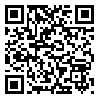BibTeX | RIS | EndNote | Medlars | ProCite | Reference Manager | RefWorks
Send citation to:
URL: http://umj.umsu.ac.ir/article-1-3317-en.html
Background & Aims: Diabetes is one of the health problems in all societies. Exercise training and drug interventions, especially herbal medicines are considered as effective approaches in improving diabetes. The objective of this study was to investigate the effect of regular aerobic exercise and Nigella supplementation and a combination of both on the Apelin and Glucose in rats with type 2 diabetes.
Materials & Methods: Seventy five male Wistar rats were divided into five groups: normal control, diabetic control, diabetes+aerobic training, diabetes+Nigella, diabetes+aerobic training+ Nigella. Diabetes was induced by intra-peritoneal injection of streptozotocin (50mg/kg). Exercise program included 8 weeks of aerobic training on a treadmill (5 sessions per week, 30 minutes per session, with a speed of 22m/min and 5% incline). After 8 weeks of aerobic training and Nigella consumption, plasma glucose and apelin were measured. The data were analyzed via ANOVA and Tukey with a significant level of P<0.05.
Results: Apelin and glucose index in diabetic control group was significantly higher than normal control group. Also the mean of clucose index in diabetes+ Nigella, diabetes+ training and diabetes+ training+ Nigella groups was significantly lower than diabetic control group. But the mean of Apelin index in diabetes+ training and diabetes+ training+ Nigella groups was significantly higher than diabetic control group. but diabetes+ training group wasn’t significantly.
Conclusion: It seems that aerobic training along with the use of specific herbal plants can be considered as a complementary therapy in improvement of diabetics.
SOURCE: URMIA MED J 2016: 27(1): 18 ISSN: 1027-3727
| Rights and permissions | |
 |
This work is licensed under a Creative Commons Attribution-NonCommercial 4.0 International License. |





